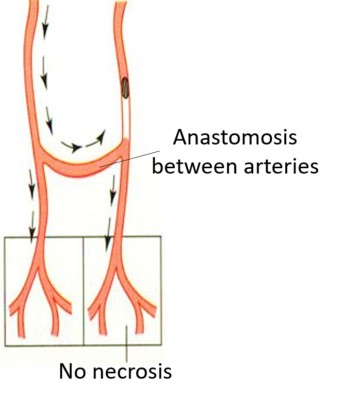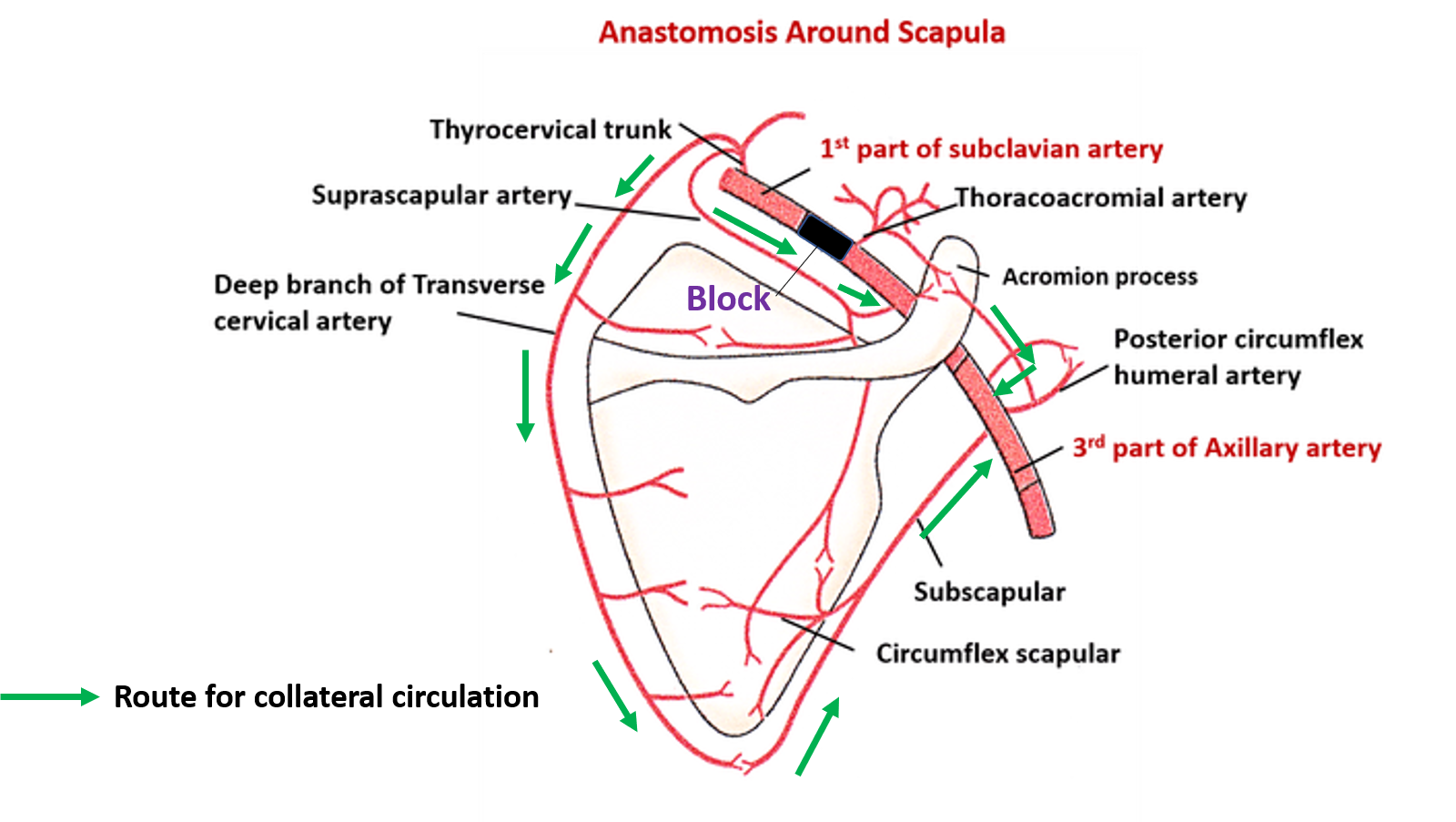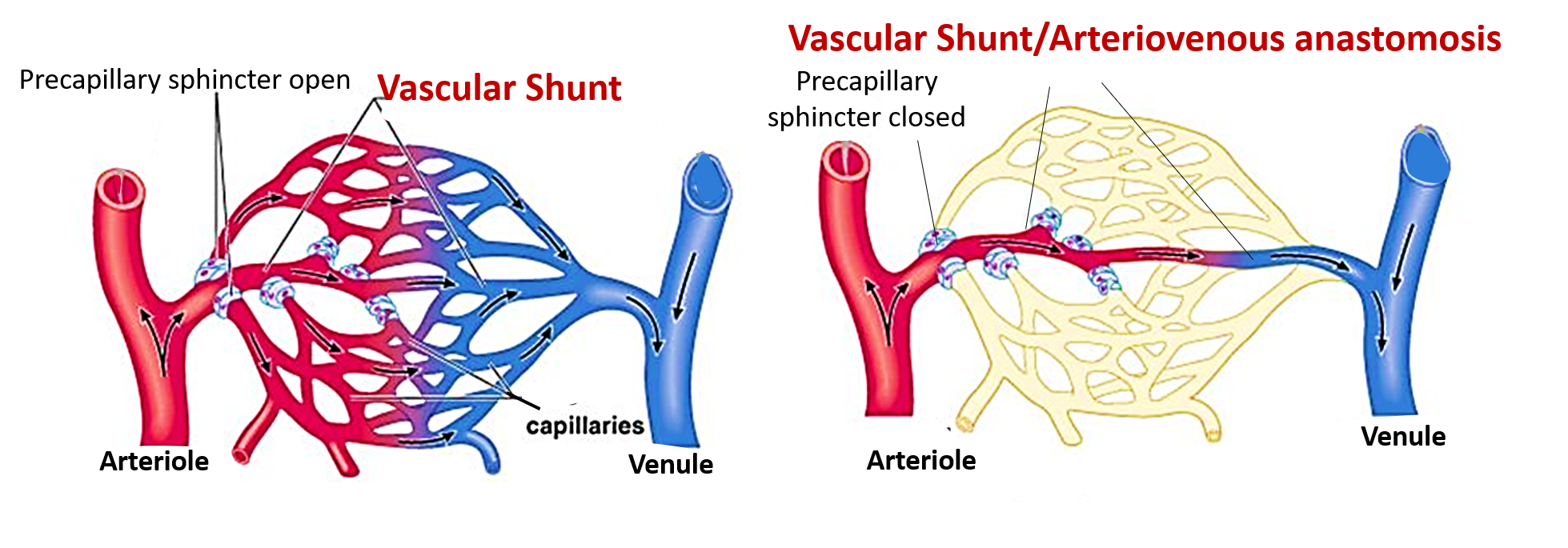What are true/anatomical and functional end arteries?
True/anatomical end arteries are those arteries that do not have precapillary anastomoses with their neighbouring arteries. In case of blockage of an end artery due to a thrombus, the part supplied by it undergoes ischemia and later avascular necrosis. e.g. arteries supplying kidneys, brain and retina.
Functional end arteries are those arteries whose terminal branches do anastomose, but the anastomosis is not sufficient to maintain the blood supply to the part they supply in case of any blockage in the artery. e.g. coronary arteries.

Name the organs/structures supplied by end arteries.
Following organs/structures are supplied by end arteries:
- Kidneys
- Liver
- Spleen
- Lung
- Brain
- Retina
Define Anastomosis.
Anastomosis is defined as communication between the neighbouring blood vessels. The branches of an artery are connected to the branches of another neighbouring artery. This communication occurs at precapillary level. The anastomosis provides collateral channel for circulation when one of the arteries is blocked. For e.g.
- Anastomosis between labial branches of facial arteries.
- Anastomosis between anterior and posterior intercostal arteries.
- Uterine and ovarian arteries.
- Arterial arcades in the mesentery of intestine.
- Arterial anastomosis around scapula.
- Arterial anastomosis around elbow joint.
- arterial anastomosis around knee joint.
Arterial anatomosis are of following two types:
Actual anastomosis
- In actual arterial anastomosis the arteries meet end to end, e.g. palmar and plantar arches, circle of Willis, intestinal arcades, labial branches of facial arteries.
Potential anastomosis
- In potential arterial anastomosis the communication occurs between the terminal arterioles. On sudden occlusion of a main artery such anastomosis may not provide sufficient collateral circulation these anastomoses dilate gradually over a period of time for collateral circulation,e.g coronary arteries.
Define Collateral Circulation.
Collateral circulation occurs when a tissue or an organ has a number of different pathways for blood to reach it. This happens as a result of anastomosis present between adjacent arteries. In this process small arteries connect two larger arteries or different parts of the same artery and serve alternate route of blood supply.

In the above diagram, anastomosis occurs between the branches of 1st part of subclavian and 3rd part of axillary arteries. In case of obstruction between the 1st part of subclavian and 3rd part of axillary arteries, collateral circulation (green arrows) allows the blood to reach the axillary artery distal to the obstruction.
Describe the vascular shunts/arteriovenous anastomosis.
Arteriovenous anastomosis/vascular shunts are the channels that bypass the capillaries. The direct connection between the arteries and veins without the intervention of capillaries is termed arteriovenous anastomosis.
Their function is to regulate temperature and regional blood flow. When the organ is active these shunts are closed and the blood passes through the capillaries. However, when the organ is not active, the blood bypasses the capillary bed and is shunted through the arteriovenous anastomosis.
The arteriovenous shunts in the skin open when a person is exposed to cold. As a result most of the blood does not pass through the capillaries in the dermis of skin. Thus the blood is shunted away from the skin surface when exposed to cold temperature, thus preventing heat loss. The arteriovenous shunts open and allow maximum blood flow to the skin in warm weather to allow heat to dissipate.
Sites where arteriovenous anastomoses are found in:
- Skin of nose,lips, external ear
- Nasal mucosa
- Kidney
- Intestines
- Erectile tissue of sex organs.


Vry useful notes of gearnal anatomy and simply langauge writing .any one not hard langauge . Every body reading easily. Thanks for goggle.